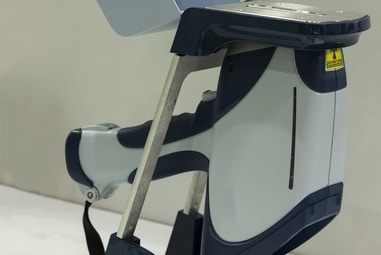Portable Analytical Instruments Put to Work in Drug Abuse Crisis
Drug abuse is one of the largest global health issues in the 21st century, with millions each year being touched by the second largest black market in the world after arms sales. According to the World Health Organization, nearly 300 million worldwide used an illicit drug at least once in 2016. Some drugs, like marijuana, are facing a shift in public opinion and government policy, with many countries decriminalizing or legalizing their use. Other drugs, like cocaine and opiates, have seen a worrying upward trend in their use and production. Synthetic drug production is also on the rise, with law enforcement struggling to keep up with their creation. These global trends can best be seen within the United States.
The US is one of the world’s largest consumers of illicit drugs. Synthetic and prescription opioids are major areas of concern, with both seeing major spikes in usage and overdose deaths since 2013. In recent years, the US has found itself in the midst of an opioid crisis, with nearly 3 million abusing opioids in 2016, prescription and otherwise. Additionally, the US spends nearly $50 billion a year to combat illicit drug use. This is contrasted by the country also being at the forefront of decriminalizing drugs like MDMA and marijuana for medical and recreational use. This dichotomy between harsh illicit drug policy and a deregulation of certain drugs has led to a wide and varied drug culture across the country.
This crisis has led to an increased effort to police and treat communities affected. Identification of the drug involved in opioid cases is often the first step in determining the correct course of action. Law enforcement agencies routinely use lab-based analytical instrumentation for analysis of illicit drug samples. Common analytical methods for the testing of drugs of abuse include mass spectrometry and Raman spectroscopy, markets which we routinely explore in our annual Global Assessment Report. However, given the nature of the application, it is often more convenient and expedient to perform such analysis in the field rather than in the lab.
Color-based tests are commonly used as a cheap and fast alternative to sending samples back to the lab. These tests are simple, with the user placing a sample of the drug in a plastic bag. The drug reacts with chemicals within the bag, resulting in a color change. These color tests have the disadvantage of not being able to identify new synthesized drugs and being subjective based on color, sometimes leading to false positives. These tests are also single-use, based on a single drug, and destructive.
Alternatively, many are switching to portable analytical instruments. According to SDi’s The 2019 Market for Portable Instrumentation, the government sector will see 5.1% growth for portable analyzers over the next five years, above average for the portable instruments market as a whole. This growth will be driven by the advantages portable instruments have over traditional color-based tests, including non-destructive testing and the ability to be used on practically every illicit drug on the market. Another advantage of portable instruments is improved safety. Some instruments can analyze samples through packaging, and others can even be used in a standoff fashion, analyzing samples up to three feet away. While the upfront cost of portable instruments can be a limiting factor, the US Department of Justice estimates the annual per jurisdiction cost of color-based tests ($30K) to be similar to that for a portable instrument.
Some of the prominent portable analytical technologies used are Raman spectroscopy, IR spectroscopy, MS and GC/MS. In particular, SDi estimates that Raman spectroscopy will be the fastest growing portable analytical technology over the next five years. These instruments come in a variety of shapes and sizes. Portable spectroscopy instruments usually are the size of a tablet or smartphone, while portable MS and GC/MS instruments are closer to the size of a suitcase. Many instruments feature simple pass-fail UI to work around the complexity of the analysis, and vendors regularly update reference libraries. One example of which is vendors updating libraries for fentanyl and its derivatives in response to the opioid crisis in the US.
Future advances in portable instrumentation will certainly benefit the field of illegal drug testing. The advent of portable HPLC will certainly bring another dimension to field analysis of narcotics, while other technological advances in mass spectrometry and spectroscopy will continue to bring better sensitivity and resolution to the field. In general, the portable instrumentation market is one of the fastest-growing segments for analytical instrumentation. While illicit drug testing is certainly a large market, other applications like analyzing water directly from the stream or fruit still on the tree are other areas opened up by portable instruments. More information on the market for portable analytical instrumentation is now available in SDi’s recent publication, The 2019 Market for Portable Instrumentation: In the Lab & In the Field.





